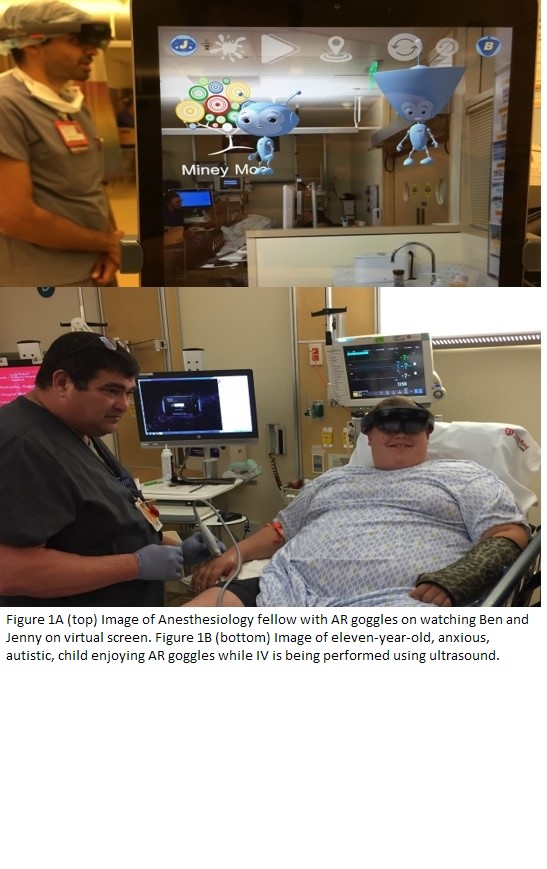OT-117
Augmented Reality for Intravenous Access in an Autistic Child with Difficult Access
Rodriguez S, Caruso T, Pearson M, Tuss V, Munshey F
Lucille Packard Children's Hospital Stanford, Stanford, CA, United states
Introduction
Pre-induction intravenous (IV) access is safer in morbidly obese children given the increased risk of adverse respiratory events.1 IV access is often difficult in these patients requiring multiple attempts which can be stressful for a child.1
Study Aim
To observe if augmented reality (AR) can reduce anxiety while obtaining IV access in an eleven-year- old morbidly obese autistic child (BMI 57) presenting for an esophagogastroduodenoscopy (EGD).
Methods
An anxious, autistic, eleven-year-old child with multiple poor IV experiences presented for EGD. Two novel non-pharmacological techniques to reduce anxiety were discussed with the family: virtual reality (VR) and AR glasses. The child opted for AR glasses as they allowed for partial immersion and he feared being unable to see his surroundings with VR. Upon wearing the glasses, interactive cartoon holograms, Ben and Jenny, projected in front of the patient through a Microsoft Hololens. Once the patient said, “IV Prepâ€, Ben and Jenny began discussing the cannulation process in an interactive and playful fashion. Aspects such as sites, indications, and needle pain reducing tactics were discussed. To enhance engagement, the child brought his fingers together in front of the screen to fire virtual paintballs at anything in his vision. At this point the IV was performed.
Results
Throughout the process, the patient remained engaged with the glasses while periodically looking at the needle. At no point, did the child appear anxious. After successful cannulation, the mother was extremely satisfied and the child described the experience as “the best IV I’ve ever gottenâ€.
Discussion
This illustrates successful application of AR in the perioperative care of a child. Unlike VR which completely isolates users from their surroundings, AR allows incorporation of elements into the viewers surroundings with interactive holograms. For a child wanting to see their environment yet still have three dimensional interactions, AR is ideal. Though other audiovisual interaction techniques for children exist, AR glasses are unique in their ability to blend the frightening unfamiliar surroundings of the hospital with playful and educational holograms. A similar technique of using augmented reality to decrease phobias has been studied.2
Conclusion
AR serves as an ideal tool for non-pharmacologic anxiolysis in patients who fear the completely immersive nature of VR.
References
1. El-Metainy S, Ghoneim T, Aridae E, et al. Incidence of perioperative adverse events in obese children undergoing elective general surgery. Br J Anaesth [Internet] 2011 [cited 2017 Sept 3]; 106(3): 359-63. Available from: https://doi.org/10.1093/bja/aeq368.
2. Botella C, Juan M, Banos R, et al. Mixing Realities? An Application of Augmented Reality for the treatment of Cockroach Phobia. Cyberpsychol Behav [Internet] 2005 [cited 2017 Sept 4]; 8(2): 162-71. Available from: https://doi/pdf/10.1089/cpb.2005.8.162
Top












